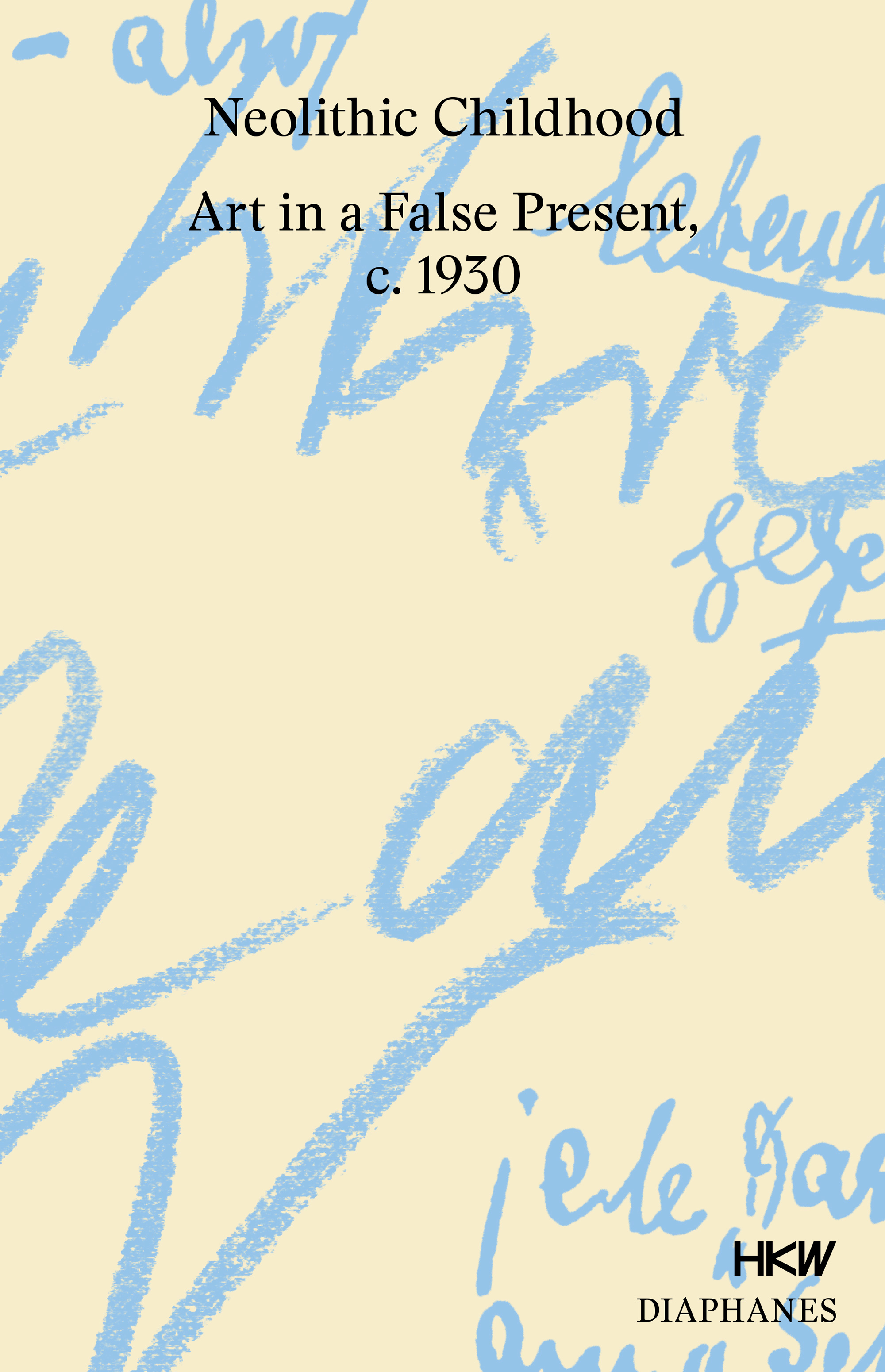Anselm Franke, Tom Holert (eds.): Neolithic Childhood: Art in a False Present, c. 1930 (2018)
Filed under book, catalogue | Tags: · art, art history, autonomy, avant-garde, capitalism, formalism, gesture, hallucination, modernism, primitivism, surrealism, totality

“Resonating at the heart of Neolithic Childhood. Art in a False Present, c. 1930 is the question whether art has present, past, and future functions. The modernist assertion of the autonomy of art was intended to render superfluous art’s social and religious functions. But what if the functionlessness of art comes under suspicion of being instrumentalized by bourgeois capitalism? This was an accusation that informed the anti-modernist critique of the avant-garde, and particularly of Surrealism. The objective throughout the crisis-ridden present of the 1920s to the 1940s was to reaffirm a once ubiquitous, but long-lost functionality—not only of art.
The publication accompanying the exhibition examines the strategies deployed in this reaffirmation. These include the surrealist Primitivism of an “Ethnology of the White Man” together with the excavation of the deep time of humanity—into the “Neolithic Childhood” mapped out by the notoriously anti-modernist Carl Einstein (1885-1940) as a hallucinatory retro-utopia. The volume brings together essays by the curators and academics involved in the project, primary texts by Carl Einstein and a comprehensive documentation of the exhibition including lists of works, texts on as well as images of numerous exhibits and finally installation views. At the center of the volume, a glossary discusses Carl Einstein’s own theoretical vocabulary as well as further associated terms, such as Autonomy, Formalism, Function, Gesture, Hallucination, Art, Metamorphosis, Primitivisms, Totality.”
With contributions by: Irene Albers, Philipp Albers, Joyce S. Cheng, Rosa Eidelpes, Carl Einstein, Anselm Franke, Charles W. Haxthausen, Tom Holert, Sven Lütticken, Ulrike Müller, Jenny Nachtigall, David Quigley, Cornelius Reiber, Erhard Schüttpelz, Kerstin Stakemeier, Maria Stavrinaki, Elena Vogman, Zairong Xiang, Sebastian Zeidler.
Publisher Diaphanes, Berlin, and Haus der Kulturen der Welt (HKW), Berlin, 2018
ISBN 9783035801064, 3035801061
460 pages
Exhibition and conference
Publisher
Publisher
WorldCat
PDF (removed on 2018-9-12 upon request from publisher, see a preview of the first 32 pages)
Comment (0)Terry Castle: The Female Thermometer: Eighteenth-Century Culture and the Invention of the Uncanny (1995)
Filed under book | Tags: · 1700s, fantasy, gender, hallucination, masquerade, phantasmagoria, sexuality, travesty, uncanny

The work of leading scholar Terry Castle, called by the New York Times “always engaging…consistently fascinating,” has helped to revolutionize thinking about lesbian studies and eighteenth-century literature. Reenvisioning the era as peculiarly alive with complexity, in which gender, sexuality, and culture are in constant flux, she offers provocative new theories on culture and sexual identity.
This collection offers several of Castle’s liveliest essays on female identity from the eighteenth century to the early twentieth century. Throughout the book are woven themes which are constant in Castle’s work: fantasy, hallucination, travesty, transgression, and sexual ambiguity. Like the mythical thermometer of the title, which was purported to measure female lasciviousness, literature is filled with devices for quantifying elements of women’s nature and sexuality which are hard to define–or uncomfortable to confront. Looking at images that mask or mystify female nature, like the masquerade or ghosts, these essays offer a challenging look at a fascinating range of issues involved in the exploration of gender studies.
The inaugural volume in Oxford’s Ideologies of Desire, The Female Thermometer foreshadows the thought-provoking and forward-looking nature of the books that will make up the series. Its revisionist version of eighteenth-century life will intrigue all those concerned with cultural studies and issues of gender relations throughout history.
Publisher Oxford University Press, 1995
Ideologies of Desire series
ISBN 019508098X, 9780195080988
288 pages

